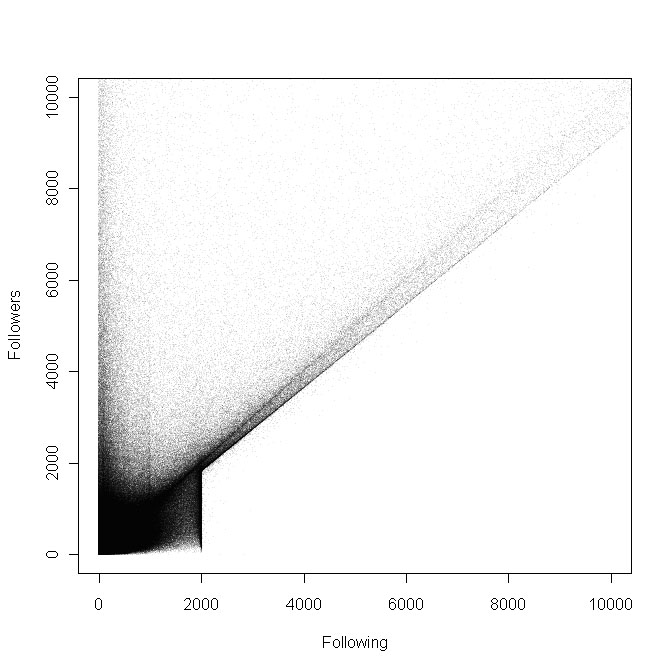Twitter Bot Nests
At this point, it is fairly common knowledge that a significant potion of Twitter ‘users’ are in fact, bots, or scripts that people have written to generate Twitter accounts. However, what many people do not realize is that there is an ongoing battle between Twitter’s spam detection and the ever convoluted methods that these bots use in order to stay undetected.
There are many reasons to motivate the creation of such bots. These Twitter bots can be highly profitable being used in services where a real user can buy any number of Twitter followers to increase their perceived legitimacy and popularity. Bots like these can even be used to maliciously, as in the case of @Symbiartic, the Twitter account from a science blog. In May this year, after seeing a sharp increase in the number of followers he had in the span of a few hours, he discovered that the new influx of followers was entirely composed of these bot Twitter accounts. It is easy to block a single person on Twitter, but when the numbers start to go past the thousands, there is only so much clicking that one person can do. @Symbiartic was able to eventually use a separate service called Manageflitter to detect which followers were bots and which were real people. As Twitter followers become easier, anyone can conduct attacks like these, fairly anonymously. It becomes clear why it is in Twitter’s best interest to catch these spam accounts before they can do damage.
The details of how exactly Twitter handle spam detection for accounts were not easy to find, nor would you expect them to be. At the end of last year, they released a [1] blocked accounts page for each user, where they can go to block accounts from following their page. Twitter also has certain rules in place to catch “aggressive following” [2]. This limits people in the number of accounts they can follow per day, and also caps the total number of accounts you can follow to two thousand. After that, only people with a reasonable followers/following ratio can continue to follow more people. Take this graph taken from [3]. Each pixel in the graph is a Twitter user and the axes show the number of followers they have and the number of accounts they follow. You can see the cutoff at 2000.

This is where it starts to get interesting. There are ways to get around this limitation, and they involve creating masses of Twitter bots. This Twitter “Nest” provides several advantages over lone wolf Twitter bots. Each both is able to have his comrades followers so he can appear more credible as a real user. This allows the bots to display more authentic Network behaviors that allow then to mimic real users more accurately. This is image of an example of one of these clusters [4].
This is study conducted on a nest of Twitter bots [4]. From the image, we can see how there is some pattern in the structure of the nodes. There are several smaller clusters of nodes in the outer edges of the network, which seem like groups of nodes that were added most recently and haven’t had the time to follow many of existing nodes in the cluster or to be followed by the other nodes in the cluster–we can tell this because of their small size, which represents the number of followers they have. This also suggests that the bots added to the graph in groups, and these groups are coded to first add each other and delay migrating into the cluster for their growth to appear more natural.
The author also analyzed the similarity of tweets that these bots would say and graphed them below.

This one cluster is actually part of a number of clusters, which the author hypothesizes may be supported by a group out of Moscow.

All in all, the author found a total of 17,850 bots in the network The author however noted several ways of identifying these Twitter bots. One giveaway is that their metadata doesn’t show location information. They also never seemed to do things that real humans would do. They had no Twitter favorites and never mentioned other Twitter users using the ‘@’ shortcut. The scale of these operations is terrifying. This number of bots interacting with real users on Twitter has the ability to sway public opinion and at least perceived public opinion. Other journalism sources and especially social media sometimes feature Twitter screen shots as sources. The threat is real of these Bot Nests having an impact on real politics and decisions.
[1] https://blog.twitter.com/2014/building-a-safer-twitter
[2] https://support.twitter.com/articles/68916
[3] http://www.robweir.com/blog/2011/03/twitter-powers-of-ten.html
[4] https://globalvoicesonline.org/2015/04/02/analyzing-kremlin-twitter-bots/
